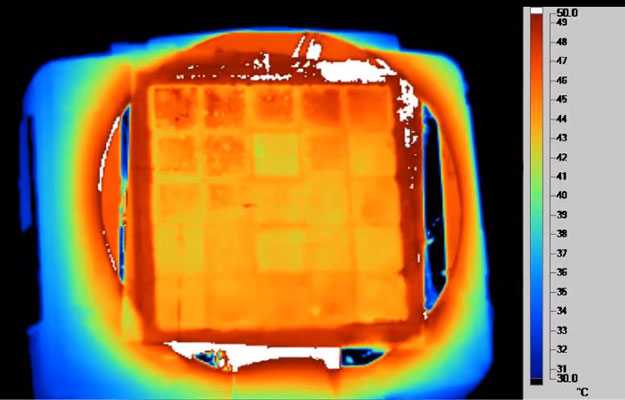Researchers Develop Thermal Camouflage To Make You Invisible To IR Cameras And The Predator

A team of researchers have done something pretty remarkable with graphene, and it has nothing to do with battery technology or next-generation semiconductors. Instead, they developed a graphene-based adaptive thermal camouflage film that can effectively mask hot objects, such as a human soldier, from infrared cameras that scan the surroundings and detect different heat profiles. Had this existed before, the creature in Predator would have had a much tougher time hunting his human prey.
This isn't science fiction, though. The material is a thin, lightweight, and ultra-flexible film that can reconfigure its thermal appearance and blend in with the varying thermal background within a matter a seconds. It does this by way of a multi-layer electrode stacked on top of a porous polyethylene (PE) membrane and a back gold electrode coated on heat-resistant nylon. The researchers synthesized the multi-layer graphene film on nickel foils using a chemical vapor deposition method, then transferred them to a PE membrane, which is IR transparent.

"The thermal radiation emitted by the device mainly originates from the top graphene electrode because the emissivity of gold-coated substrate is very low (<0.01) due to its highly reflective nature and IR transparency of the PE membrane. The gold electrode also prevents transmission of the background thermal radiation," the researchers explain. "Under a voltage bias, the ionic liquid intercalates into the graphene layers and dopes them. As a result of doping, the charge density on graphene increases and Fermi-level shifts to higher energies, which suppress the IR absorption and thus the emissivity of the graphene electrode."
What all that means in plain English is that the film can effectively conceal what it's covering from thermal cameras and night vision goggles. Whereas those devices allow a viewer to see warm-blooded creatures contrasting in a cool environment, the graphene-based film mimics the surrounding heat profile so that whoever is behind it simple blends in with the area.
This is not the first time that scientists have been drawn to thermal camouflage. However, previous applications have been unwieldy for various reasons—some have been inflexible, and others have responded much slower, making them far less useful in the field. This new tech is comparatively fast and more easily applied because of its lightweight and flexible properties.
It remains to be seen how this will be applied, though the researchers point to further development that could lead to new technologies, not only for thermal camouflage, but also for adaptive IR optics and adaptive heat shields for satellites.
Images Sourced From: American Chemical Society

